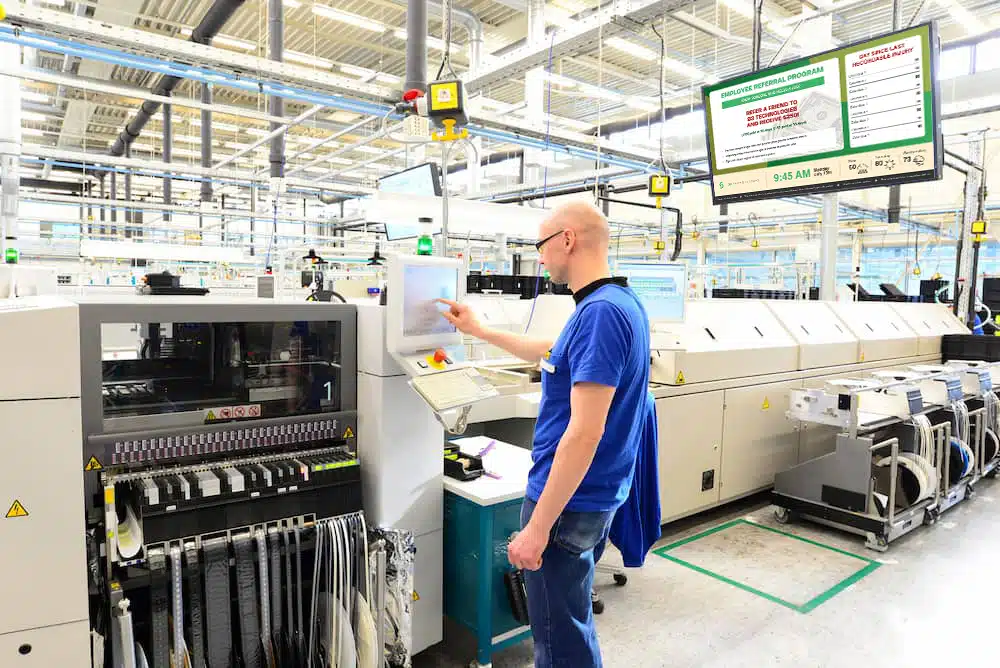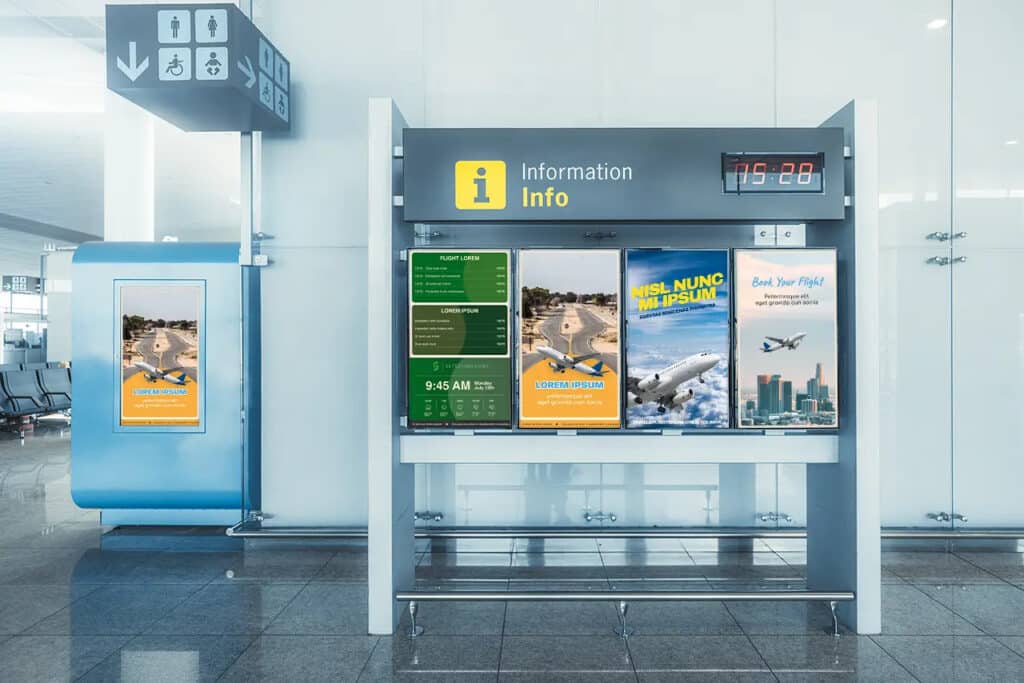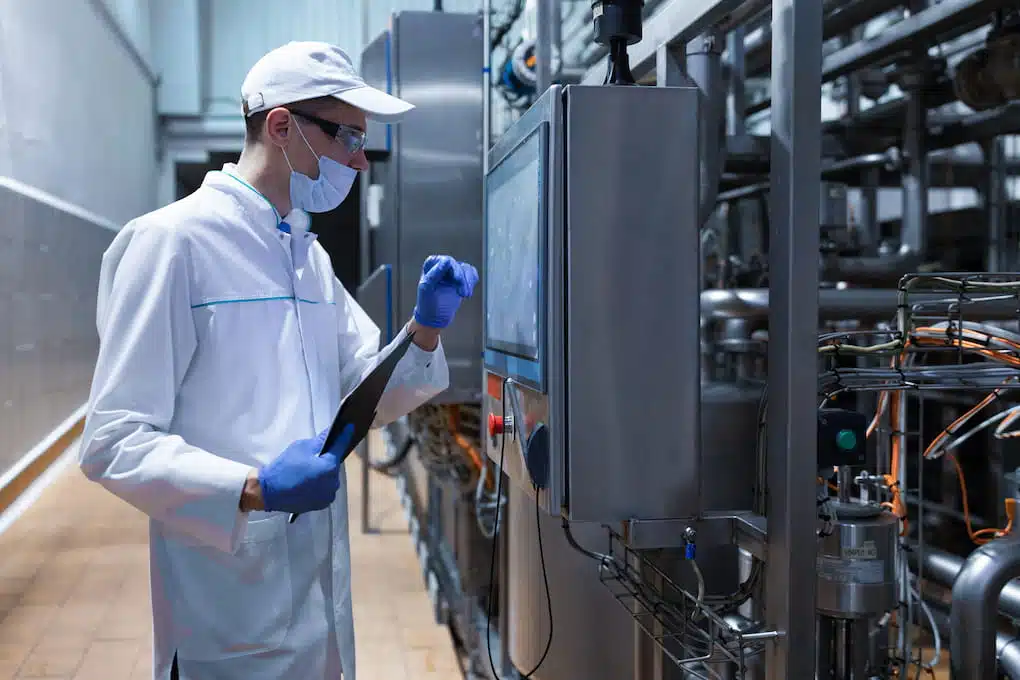
Choosing the Right Digital Signage Hardware & Software for Business
The digital signage industry is expanding rapidly, with an expected reach of $35.65 billion by 2030. This growth demonstrates the …

Discover New Possibilities! Click Here to Download Your Free eBook Today and Unlock Expert Insights!
Digital signage is a powerful tool that has become increasingly popular in manufacturing facilities around the world. It involves the use of digital displays to convey real-time information to employees, thereby improving communication, productivity, and safety in the workplace.
In this blog post, we will explore the various benefits of digital signage in manufacturing, including increased communication and information dissemination, improved productivity, enhanced safety, real-time monitoring and control, and better employee engagement and training.
We will examine each of these benefits in turn, discussing how digital signage can help manufacturers to optimize their operations and achieve their goals. By the end of this post, you will have a better understanding of how digital signage can benefit your manufacturing facility, and how it can improve efficiency, safety, and overall productivity.

Effective communication is critical to the success of any manufacturing facility. Digital signage can help improve communication and information dissemination, ensuring that employees receive real-time updates regardless of their location within the plant. Digital signage can also help management to communicate more effectively with workers, reducing misunderstandings and improving teamwork.
By providing real-time information on production schedules, safety alerts, and motivational messages, digital signage can help reduce errors and accidents. Digital signage can also eliminate the need for printed materials, reducing the time and costs associated with printing and distribution. Ultimately, by promoting effective communication and information dissemination, digital signage can help manufacturers operate more efficiently, reducing costs and improving productivity.
Digital signage can be a powerful tool for improving productivity in manufacturing plants. By displaying real-time data on production status, KPIs, and work instructions, digital signage can help streamline processes, reducing the likelihood of errors and downtime. With instant access to relevant information, employees can make more informed decisions and take corrective action more quickly.
Additionally, digital signage can help improve workflow and efficiency by displaying critical information that is necessary for the smooth running of production processes. This can ultimately result in significant cost savings for manufacturers, as reduced downtime and increased productivity translate into greater output and profitability. In conclusion, digital signage can help manufacturers to optimize their operations and achieve their productivity goals more effectively.

Safety is a top priority in any manufacturing facility, and digital signage can help improve safety in several ways. By displaying safety instructions and alerts, digital signage can help increase safety awareness among employees, reducing the likelihood of accidents and injuries. For example, digital signage can be used to display reminders about wearing PPE, identifying potential hazards, and displaying emergency evacuation instructions.
This real-time information can help employees to react quickly to potential safety threats, reducing the risk of accidents. Digital signage can also be used to promote a culture of safety, by displaying safety metrics and highlighting safety achievements. By improving safety in the workplace, manufacturers can reduce the likelihood of lost time due to injury, lower workers’ compensation claims, and boost morale. Overall, digital signage can help enhance safety in manufacturing plants, promoting a safer and more productive work environment.
Real-time monitoring and control are critical components of effective manufacturing operations. Digital signage can help manufacturers achieve this by providing real-time updates on production status, inventory levels, and quality control metrics. With digital signage, managers can quickly identify potential issues and take corrective action in real-time, reducing the likelihood of defects and downtime.
Additionally, digital signage can help manufacturers remotely monitor operations from a central location, providing enhanced control over manufacturing processes. By monitoring processes in real-time, manufacturers can optimize production and achieve their production targets more effectively. Moreover, digital signage can be used to display real-time data that helps workers to make informed decisions and take corrective action promptly, ultimately leading to better quality control and fewer defects.

Employee engagement and training are critical for the success of any manufacturing facility. Digital signage can help manufacturers engage employees and provide ongoing training and development opportunities. By displaying motivational messages, company updates, and recognition of employee achievements, digital signage can help boost employee morale and job satisfaction.
Additionally, digital signage can be used to deliver interactive training programs and provide real-time updates on work instructions and standard operating procedures. This helps employees to stay up-to-date with the latest developments and acquire new skills, which can ultimately improve productivity and job satisfaction. By improving employee engagement and training, manufacturers can reduce the likelihood of employee turnover, saving on the costs of recruiting and training new employees.
Digital signage can be a powerful tool for improving efficiency and safety in manufacturing facilities. By providing real-time information to employees, manufacturers can improve communication, productivity, safety, and overall operations. Digital signage can streamline processes, reduce downtime, enhance safety awareness, monitor manufacturing processes, provide training opportunities, and boost employee engagement and morale.
We encourage manufacturing companies to consider implementing digital signage in their operations. By doing so, they can optimize their operations and achieve their goals more effectively, while improving the safety and wellbeing of their employees.
If you are interested in learning more about the benefits of digital signage in a manufacturing facility, we recommend consulting with a digital signage provider to discuss your specific needs and requirements. Together, you can develop a customized solution that meets your needs and enhances the productivity and safety of your manufacturing operations.

The digital signage industry is expanding rapidly, with an expected reach of $35.65 billion by 2030. This growth demonstrates the …

Discover New Possibilities! Click Here to Download Your Free eBook Today and Unlock Expert Insights! Communication is critical in a …

If you’re an HR or Communications leader, have you ever considered making your corporate messages hit the right note? Well, …

Digital signage health and safety helps manage staff members and can also help ensure the safety of your employees. Notifying …